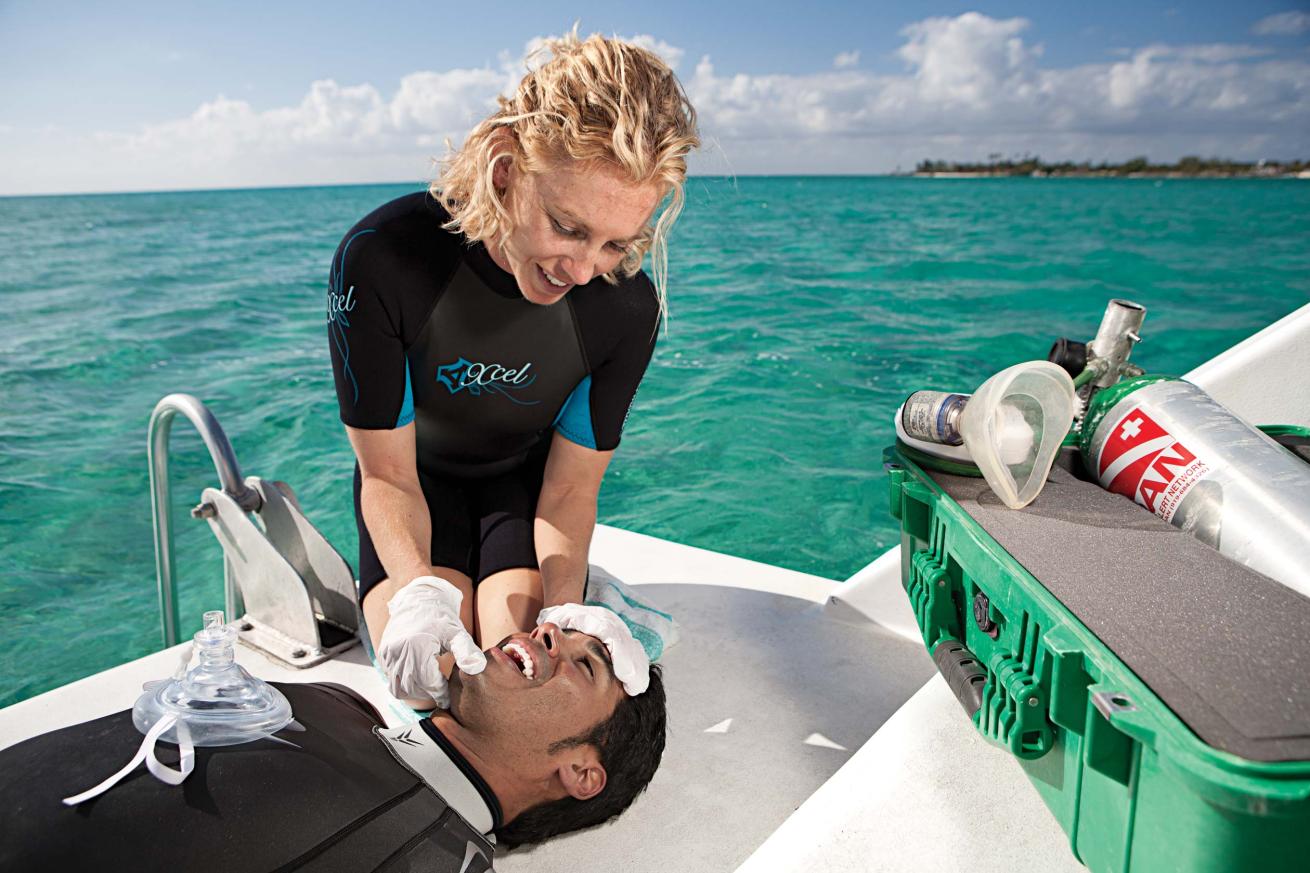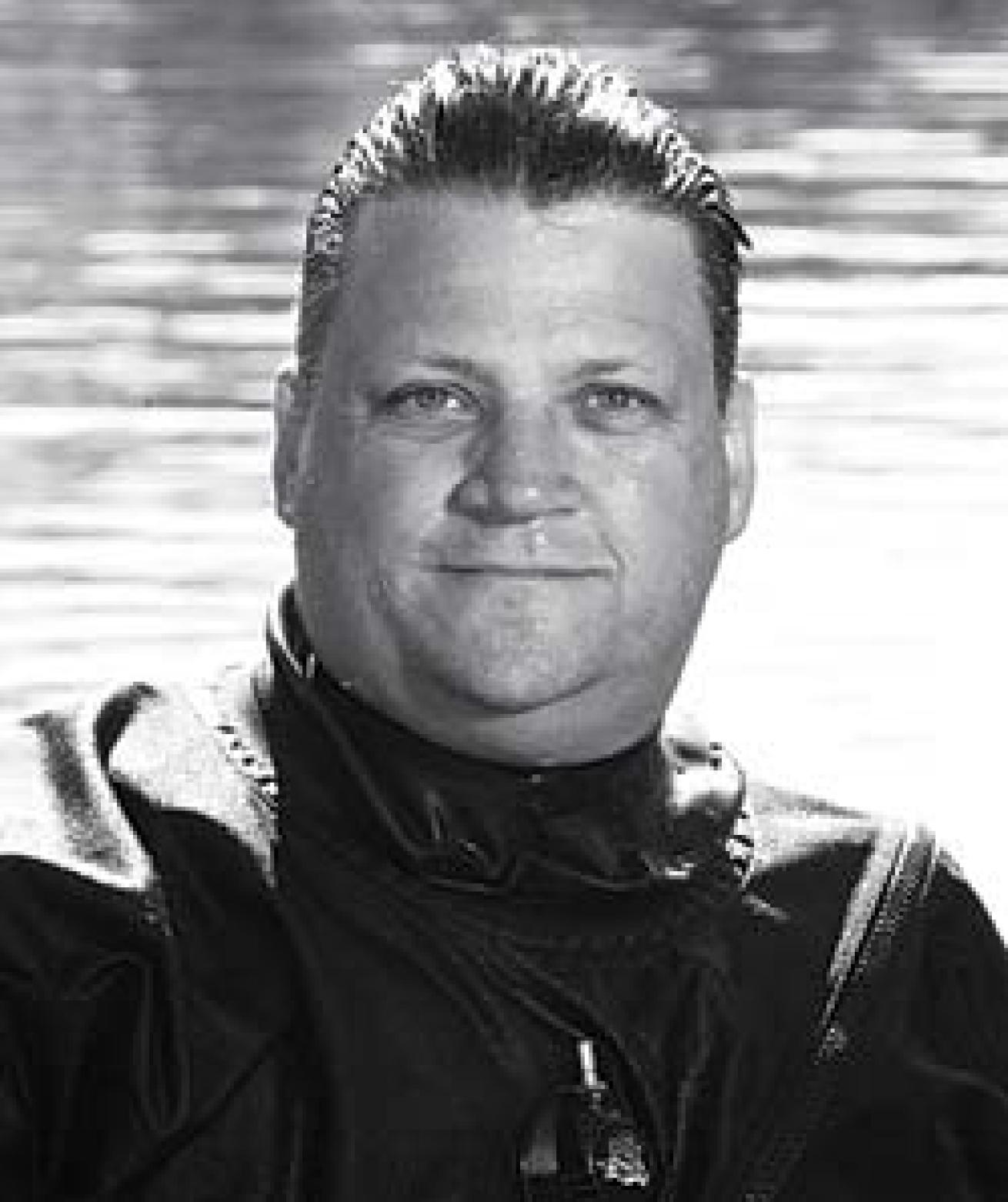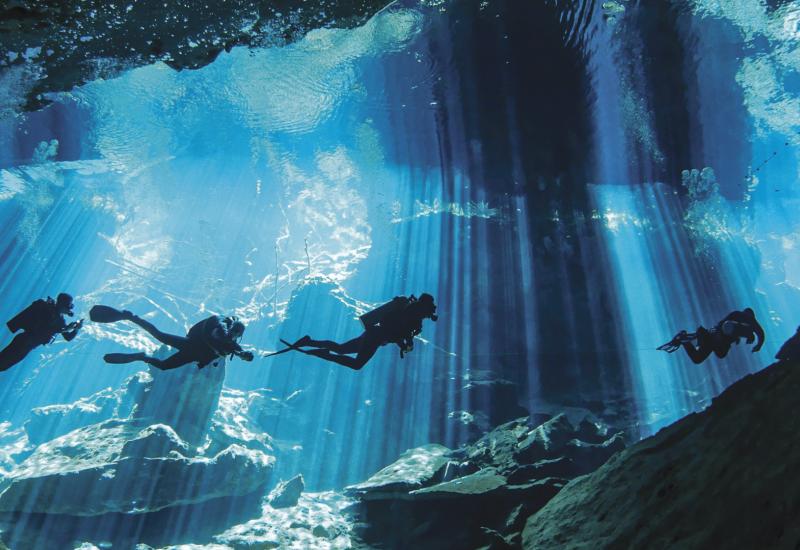Should Rescue Training Be Required?

Should Rescue Be Required
Courtesy: PADI
Requiring rescue training for full certification will help create better divers

By: Eric Douglas
The one thing you won’t find on any class outline or course objective is the topic “how to be a better diver.” But that’s exactly what rescue is all about. When you combine all the skills, lessons and practice time in the rescue diver course, it teaches the skills that help make you a better diver.
Dive accidents are rare. Most divers, even most rescue divers, will never need to perform in-water resuscitation while towing a near-drowning victim through six-foot seas or find themselves searching the confines of a deep shipwreck for a missing buddy team. But a rescue is often not a situation where you risk your own life to save another person. Nor is it a situation where a diver nearly dies before you pull him or her back from the brink. A rescue can mean spotting a potential problem and taking the steps to prevent it. A rescue can be as simple as towing a tired diver back to the boat, helping someone whose tank has slipped out of its securing straps or talking with a nervous diver to find out if they’re OK to make the dive. These are the biggest benefits of a rescue class. Rescue changes the way you look at the other divers around you.
Ironically, there is very little diving in a rescue diving course. While divers spend hours in the water practicing different rescue scenarios and learning rescue techniques, they typically won’t spend much of that time underwater. The rescue class isn’t about making dives, logging bottom time or exploring new underwater environments. Divers spend their time learning how to act and react in an emergency. They learn how to help others without getting themselves into trouble. The typical rescue class, regardless of the agency offering it, teaches search patterns and in-water rescue techniques; how to bring an unconscious diver to the surface and swim him or her to the boat or beach; and the most effective rescue skill of all: how to recognize, plan for and prevent problems before they even arise.
Divers also learn how to provide emergency care for an injured diver because basic first-aid and life-support techniques — primary victim assessment, rescue breathing (mouth-to-mouth resuscitation) and CPR — are class requirements that divers need to obtain. Rescue courses help divers adapt these skills to the diving world.
Club programs like BSAC and CMAS and even scientific diving programs like AAUS give provisional certification for new divers, but require the divers continue through various levels of training as they earn more opportunities to diver deeper or in different situations. By adding a first-aid component and 10 or so additional dives to open-water classes for full certification, open-water student divers would get a combined open water and rescue diver certification. And they would come away much more confident and ready for diving on their own. Often, divers earn their dive certification and then they feel lost. They don’t have the confidence after four open-water dives to go diving on their own. If they stayed under the guidance of an instructor for longer and broadened their experiences, they would be better and more confident in the water.
I taught my first rescue class as a newly minted dive instructor, and I felt a little intimidated. In preparation, I went through all my teaching materials and did a lot of background work in addition to what I had already learned in my instructor course. Finally, I stepped back and thought about my own rescue class. The one thought that kept coming back to me was the sense of satisfaction I had at the end. I faced stress and physical challenges and grew tremendously as a diver in just a few days, feeling more comfortable and confident in the water than I had ever felt before. I think open-water students would benefit from having this type of training incorporated in open-water courses.
Eric Douglas has contributed numerous articles on training-related issues for Scuba Diving and writes the magazine’s popular Lessons For Life column. He also co-authored the book Scuba Diving Safety. He is a PADI IDC Staff Instructor and DAN Instruc/Applications/TextEdit.apptor Examiner.
Requiring rescue certification would be a barrier for prospective student divers

By: Floyd Devine
While most divers will agree that completion of rescue training is one of the most challenging, humbling and rewarding experiences in recreational diving, it is the level of the challenge and the humbling of the student that make it unsuitable for the brand-new diver.
The purpose of open-water dive training is to expose students to the basic concepts and practical requirements of scuba diving. An introduction to basic rescue techniques and buddy support is enough. Training must be as simple and as fun as possible to get student divers excited about diving and draw them into the sport at the basic level. This, for many, will lead to an interest in continuing education and improving their skills so they can experience new and exciting areas of diving, such as exploring wrecks, night diving and underwater photography. In today’s dive industry, getting divers to this point requires instructors and divemasters who are both attentive and proficient in keeping their charges safe and ensuring the novice diver enjoys the experience enough to seek more training and experience. Making rescue training a requirement for basic certification would certainly improve diver proficiency, but it may have the unintended consequence of deterring prospective new divers, who may find the additional requirements daunting.
In addition to potentially scaring off new students, the added rescue course and open-water work requires more time. Today, people don’t have the time to complete both open-water training and rescue training. In fact, what they are looking for is flexibility in scheduling their training. Online courses and classes conducted over a couple of weekends increase the options a dive center can offer, but if rescue training is made mandatory, scheduling options would become more limited and could be a barrier to people entering the sport.
The certifying agencies require completion of advanced diving programs as a prerequisite to rescue diving for good reason. Rescue diver programs are the first real challenge faced by scuba enthusiasts, and the path toward professional-level certification begins here. The diver must be prepared for the challenge, and for the potential frustration of not being able to complete a skill the first time. A diver who has already completed numerous dives and advanced certification is less likely to give up when faced with a difficult test of their abilities.
I had 10 years of experience and numerous dives under my belt when I took my first rescue diver course, and I have never been as challenged before or since. Asking this of someone during their very first week of diving is not only unnecessary, but would risk turning them off to the sport permanently, to the detriment of both the potential new diver and the dive industry as a whole.
Floyd Devine is a PADI MSDT and DAN Instructor currently living and working in South America. He is an underwater photo and video enthusiast and former dive retail sales manager. An admitted gear freak, he is a dive equipment technician and former testing supervisor for ScubaLab.

Courtesy: PADIShould Rescue Be Required?
Requiring rescue training for full certification will help create better divers

Courtesy photoEric Douglas
By: Eric Douglas
The one thing you won’t find on any class outline or course objective is the topic “how to be a better diver.” But that’s exactly what rescue is all about. When you combine all the skills, lessons and practice time in the rescue diver course, it teaches the skills that help make you a better diver.
Dive accidents are rare. Most divers, even most rescue divers, will never need to perform in-water resuscitation while towing a near-drowning victim through six-foot seas or find themselves searching the confines of a deep shipwreck for a missing buddy team. But a rescue is often not a situation where you risk your own life to save another person. Nor is it a situation where a diver nearly dies before you pull him or her back from the brink. A rescue can mean spotting a potential problem and taking the steps to prevent it. A rescue can be as simple as towing a tired diver back to the boat, helping someone whose tank has slipped out of its securing straps or talking with a nervous diver to find out if they’re OK to make the dive. These are the biggest benefits of a rescue class. Rescue changes the way you look at the other divers around you.
Ironically, there is very little diving in a rescue diving course. While divers spend hours in the water practicing different rescue scenarios and learning rescue techniques, they typically won’t spend much of that time underwater. The rescue class isn’t about making dives, logging bottom time or exploring new underwater environments. Divers spend their time learning how to act and react in an emergency. They learn how to help others without getting themselves into trouble. The typical rescue class, regardless of the agency offering it, teaches search patterns and in-water rescue techniques; how to bring an unconscious diver to the surface and swim him or her to the boat or beach; and the most effective rescue skill of all: how to recognize, plan for and prevent problems before they even arise.
Divers also learn how to provide emergency care for an injured diver because basic first-aid and life-support techniques — primary victim assessment, rescue breathing (mouth-to-mouth resuscitation) and CPR — are class requirements that divers need to obtain. Rescue courses help divers adapt these skills to the diving world.
Club programs like BSAC and CMAS and even scientific diving programs like AAUS give provisional certification for new divers, but require the divers continue through various levels of training as they earn more opportunities to diver deeper or in different situations. By adding a first-aid component and 10 or so additional dives to open-water classes for full certification, open-water student divers would get a combined open water and rescue diver certification. And they would come away much more confident and ready for diving on their own. Often, divers earn their dive certification and then they feel lost. They don’t have the confidence after four open-water dives to go diving on their own. If they stayed under the guidance of an instructor for longer and broadened their experiences, they would be better and more confident in the water.
I taught my first rescue class as a newly minted dive instructor, and I felt a little intimidated. In preparation, I went through all my teaching materials and did a lot of background work in addition to what I had already learned in my instructor course. Finally, I stepped back and thought about my own rescue class. The one thought that kept coming back to me was the sense of satisfaction I had at the end. I faced stress and physical challenges and grew tremendously as a diver in just a few days, feeling more comfortable and confident in the water than I had ever felt before. I think open-water students would benefit from having this type of training incorporated in open-water courses.
Eric Douglas has contributed numerous articles on training-related issues for Scuba Diving and writes the magazine’s popular Lessons For Life column. He also co-authored the book Scuba Diving Safety. He is a PADI IDC Staff Instructor and DAN Instruc/Applications/TextEdit.apptor Examiner.
Requiring rescue certification would be a barrier for prospective student divers

Courtesy photoFloyd Devine
By: Floyd Devine
While most divers will agree that completion of rescue training is one of the most challenging, humbling and rewarding experiences in recreational diving, it is the level of the challenge and the humbling of the student that make it unsuitable for the brand-new diver.
The purpose of open-water dive training is to expose students to the basic concepts and practical requirements of scuba diving. An introduction to basic rescue techniques and buddy support is enough. Training must be as simple and as fun as possible to get student divers excited about diving and draw them into the sport at the basic level. This, for many, will lead to an interest in continuing education and improving their skills so they can experience new and exciting areas of diving, such as exploring wrecks, night diving and underwater photography. In today’s dive industry, getting divers to this point requires instructors and divemasters who are both attentive and proficient in keeping their charges safe and ensuring the novice diver enjoys the experience enough to seek more training and experience. Making rescue training a requirement for basic certification would certainly improve diver proficiency, but it may have the unintended consequence of deterring prospective new divers, who may find the additional requirements daunting.
In addition to potentially scaring off new students, the added rescue course and open-water work requires more time. Today, people don’t have the time to complete both open-water training and rescue training. In fact, what they are looking for is flexibility in scheduling their training. Online courses and classes conducted over a couple of weekends increase the options a dive center can offer, but if rescue training is made mandatory, scheduling options would become more limited and could be a barrier to people entering the sport.
The certifying agencies require completion of advanced diving programs as a prerequisite to rescue diving for good reason. Rescue diver programs are the first real challenge faced by scuba enthusiasts, and the path toward professional-level certification begins here. The diver must be prepared for the challenge, and for the potential frustration of not being able to complete a skill the first time. A diver who has already completed numerous dives and advanced certification is less likely to give up when faced with a difficult test of their abilities.
I had 10 years of experience and numerous dives under my belt when I took my first rescue diver course, and I have never been as challenged before or since. Asking this of someone during their very first week of diving is not only unnecessary, but would risk turning them off to the sport permanently, to the detriment of both the potential new diver and the dive industry as a whole.
Floyd Devine is a PADI MSDT and DAN Instructor. He is an underwater photo and video enthusiast and former dive retail sales manager. An admitted gear freak, he is a dive equipment technician and former testing supervisor for ScubaLab.










